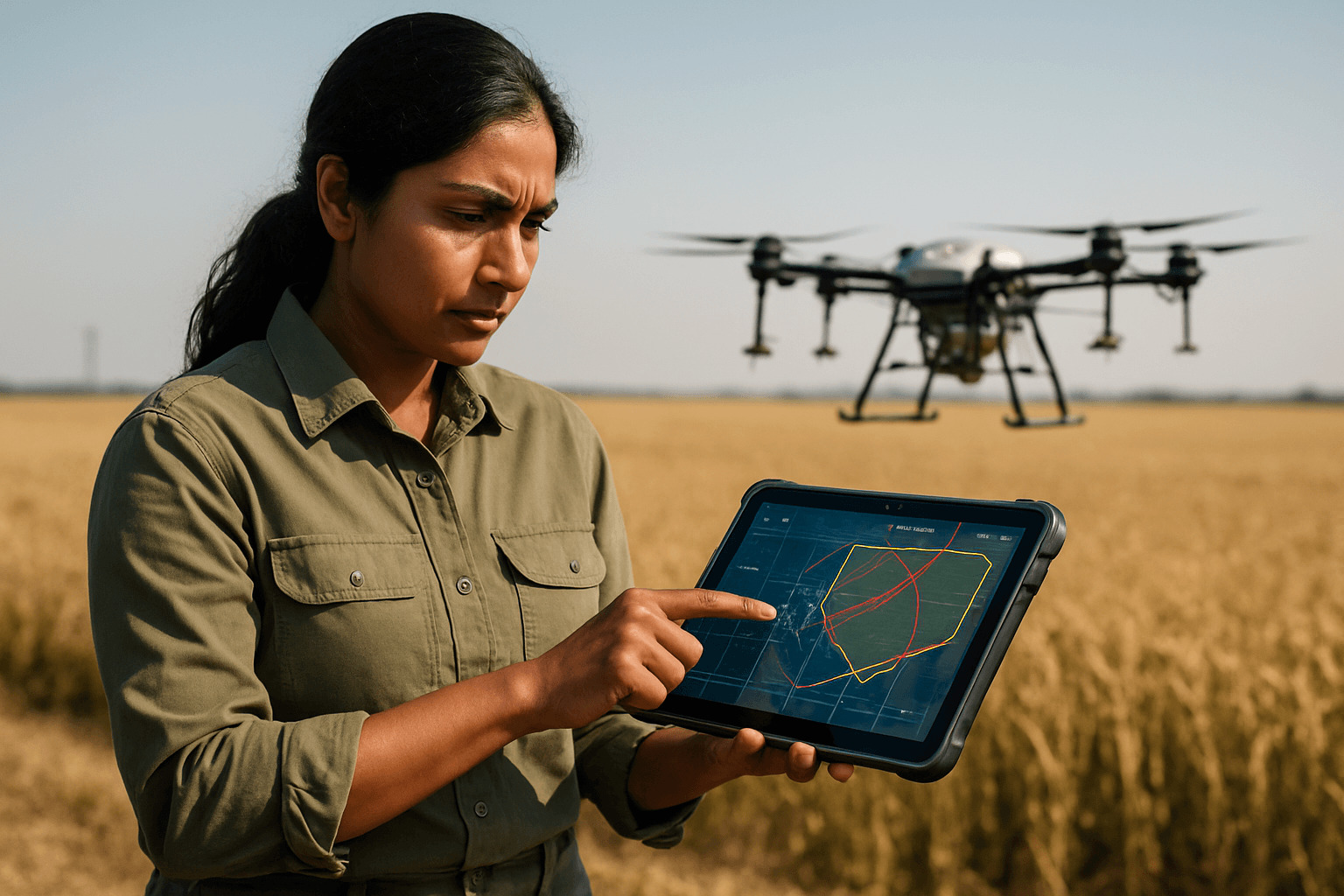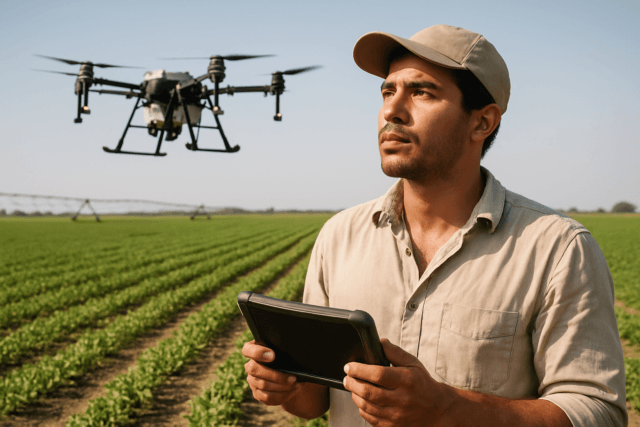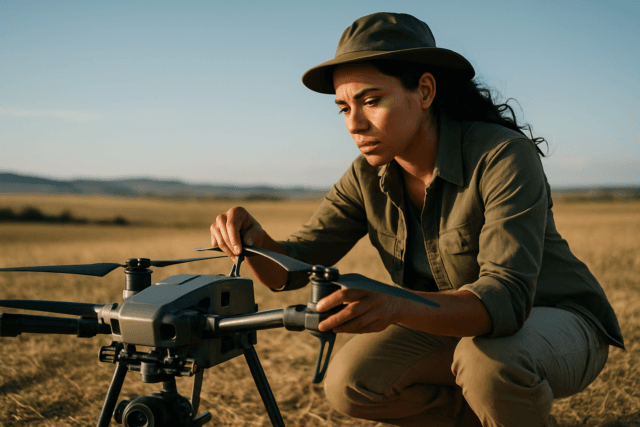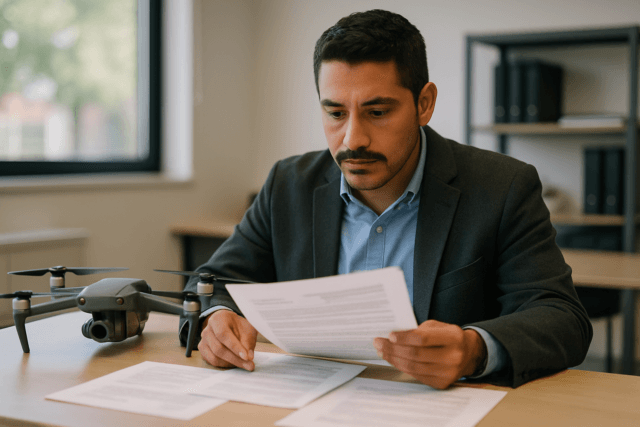The agricultural landscape is undergoing a significant transformation, with drone technology playing an increasingly pivotal role in optimizing operations, from crop monitoring to targeted spraying and livestock management. The true potential of these unmanned aerial vehicles (UAVs) in vast agricultural settings, however, lies in their ability to operate Beyond Visual Line of Sight (BVLOS). This capability allows drones to cover expansive areas efficiently, but it also introduces a complex web of regulatory challenges that vary significantly across different regions. Understanding these frameworks is crucial for farmers and agri-tech companies looking to harness BVLOS drone technology.
The Promise of BVLOS in Agriculture
Traditional Visual Line of Sight (VLOS) operations, where a drone pilot must maintain direct visual contact with the drone, limit the efficiency of agricultural drone use to smaller fields or require frequent repositioning. BVLOS operations, by contrast, enable drones to fly over greater distances and larger acreages, revolutionizing tasks such as:
- Large-scale crop health monitoring: Identifying issues like nutrient deficiencies or pest infestations across vast fields.
- Precision spraying and granular application: Applying pesticides, fertilizers, or seeds more accurately and efficiently.
- Livestock management: Monitoring herds in remote pastures.
- Detailed land surveying and mapping: Creating 3D maps of terrain for optimized land use.
This extended operational capability can lead to significant cost savings, increased productivity, and more precise resource management, ultimately boosting agricultural yields.
Global Regulatory Landscape: A Patchwork of Progress
Regulatory bodies worldwide are grappling with the complexities of safely integrating BVLOS drone operations into national airspace. While the benefits for agriculture are clear, ensuring safety, managing air traffic, and addressing security and privacy concerns are paramount.
United States: Towards Part 108
In the United States, the Federal Aviation Administration (FAA) is the primary regulatory body for drones. Currently, most commercial drone operations fall under Part 107, which generally restricts flights to VLOS unless a specific waiver is obtained. Obtaining BVLOS waivers has historically been a challenging and time-consuming process.
However, the landscape is evolving. The FAA Reauthorization Act of 2024 mandated the creation of a new regulation, known as Part 108, specifically aimed at standardizing BVLOS operations for commercial drones across various industries, including agriculture. This proposed rule, expected by late 2024 or early January 2025, aims to enable more complex and expansive drone operations. Key considerations for BVLOS waivers and the upcoming Part 108 include:
- Operational Limitations: Expected to include altitude caps, restrictions over populated areas, and geographic constraints around sensitive locations.
- Remote Identification (Remote ID): Essential for BVLOS operations, enabling drones to broadcast identification and location information.
- Detect and Avoid (DAA) Systems: BVLOS flights often require advanced DAA systems to prevent collisions with other aircraft.
- Communication Systems: Robust and reliable communication links are crucial for maintaining control over long distances.
- Waiver Pathways: Prior to Part 108, operators could pursue BVLOS waivers through avenues like visual observers, shielding, or DAA systems, with detailed safety explanations required for applications.
- Specific Approvals: Some agricultural drone spraying networks, like Rantizo, have already received FAA approvals for BVLOS, swarming, and night flights for agri-drones.
European Union: Risk-Based Approach with SORA
The European Union’s drone regulations, standardized by the European Union Aviation Safety Agency (EASA) since January 1, 2021, adopt a risk-based approach, categorizing operations into Open, Specific, and Certified. BVLOS operations fall under the “Specific” category due to their advanced nature and higher risk profile.
To obtain authorization for BVLOS flights in the EU, operators typically need to conduct a Specific Operations Risk Assessment (SORA). This is a 10-step process that defines the safety requirements for complex operations. Key elements of the EU framework include:
- Defined Geographic Zones: Drones are required to operate within defined geographic zones to minimize conflict with other airspace users.
- Detect and Avoid Capabilities: Drones must have features to detect and avoid other air traffic and maintain reliable communication links.
- Remote Pilot Licensing and Operator Certificates: Operators must comply with requirements related to remote pilot licensing and hold necessary authorizations.
- Class Identification Labels: Drones designed for specific operations, including BVLOS, are being certified with class identification labels (e.g., C6), which can simplify the authorization process. For example, AgEagle’s eBee drones have received C6 certification for BVLOS operations in sparsely populated environments, allowing operators to make a declaration to their National Aviation Authority.
United Kingdom: Atypical Air Environments (AAE)
The UK’s Civil Aviation Authority (CAA) is actively working towards enabling routine BVLOS drone operations, with a target of 2027. Historically, BVLOS flights in the UK were largely restricted to trials and required strict permissions.
A significant development is the CAA’s “Atypical Air Environment” (AAE) policy concept. An AAE is defined as airspace where a greatly reduced number of conventionally piloted aircraft are anticipated due to proximity to ground infrastructure. This concept is designed to unlock BVLOS operations, particularly for lower-altitude tasks.
- Recent Approvals: AutoSpray Systems, for instance, secured the UK’s first permanent BVLOS approval for agricultural operations in an Atypical Air Environment, allowing their 120kg agricultural drone to operate without previous distance limitations, subject to risk assessment.
- Safety Measures: The CAA emphasizes ensuring safety for other airspace users and minimizing risk to people and property on the ground. This includes requiring drones in AAEs to be equipped with ADS-B transmitters and receivers for electronic conspicuity.
- Roadmap: The CAA has published a roadmap outlining how the UK plans to achieve routine BVLOS operations by 2027, focusing on safety features, pilot training, and airspace preparation.
Australia: CASA’s Evolving Framework
In Australia, the Civil Aviation Safety Authority (CASA) regulates drone use. While drones are increasingly used in agriculture for tasks like crop monitoring, spraying, and livestock management, BVLOS operations require specific permissions.
- Licensing and Certification: Commercial agricultural drone operators typically need a Remote Pilot Licence (RePL) and a Remotely Piloted Aircraft Operator’s Certificate (ReOC) from CASA.
- BVLOS Requirements: To fly BVLOS, operators must obtain a RePL, hold or operate under an ReOC, pass the Instrument Rating Exam (IREX) or operate under a supervising pilot with it, and obtain approval for BVLOS in the planned area.
- Operational Authorization: BVLOS operations require an Operational Authorization from CASA, which includes approval for BVLOS and details specific conditions and limitations.
- Safety Measures: Similar to other regions, Australia emphasizes detect and avoid systems, robust communication, and comprehensive safety protocols for BVLOS flights.
- Ongoing Review: CASA is actively reviewing regulations for non-complex BVLOS operations in regional Australia, acknowledging concerns about the cost and time involved in current approval processes. There is an ongoing effort to gather feedback from operators, particularly those in agriculture.
Common Challenges and Future Outlook
Despite regional differences, several common challenges persist in the widespread adoption of BVLOS drone operations in agriculture:
- Airspace Integration: Safely integrating BVLOS drones with traditional manned aircraft remains a key hurdle.
- Technology Development: Reliable detect-and-avoid systems, robust communication links, and advanced Uncrewed Traffic Management (UTM) systems are crucial for safe BVLOS flights.
- Cost and Complexity of Approvals: The process for obtaining BVLOS authorizations can be expensive and time-consuming, particularly for routine farming tasks.
- Privacy and Data Ownership: Drones gather significant data, raising concerns about privacy and who owns the collected information.
- Environmental Factors: Weather conditions and varied terrain can impact the safety and reliability of BVLOS operations, requiring sophisticated planning and responsive drone systems.
As technology advances and regulatory bodies gain more experience, the frameworks for BVLOS drone operations in agriculture are expected to evolve, becoming more standardized and streamlined. The goal is to balance the immense potential benefits of this technology for food production with the paramount need for safety and responsible airspace management.





